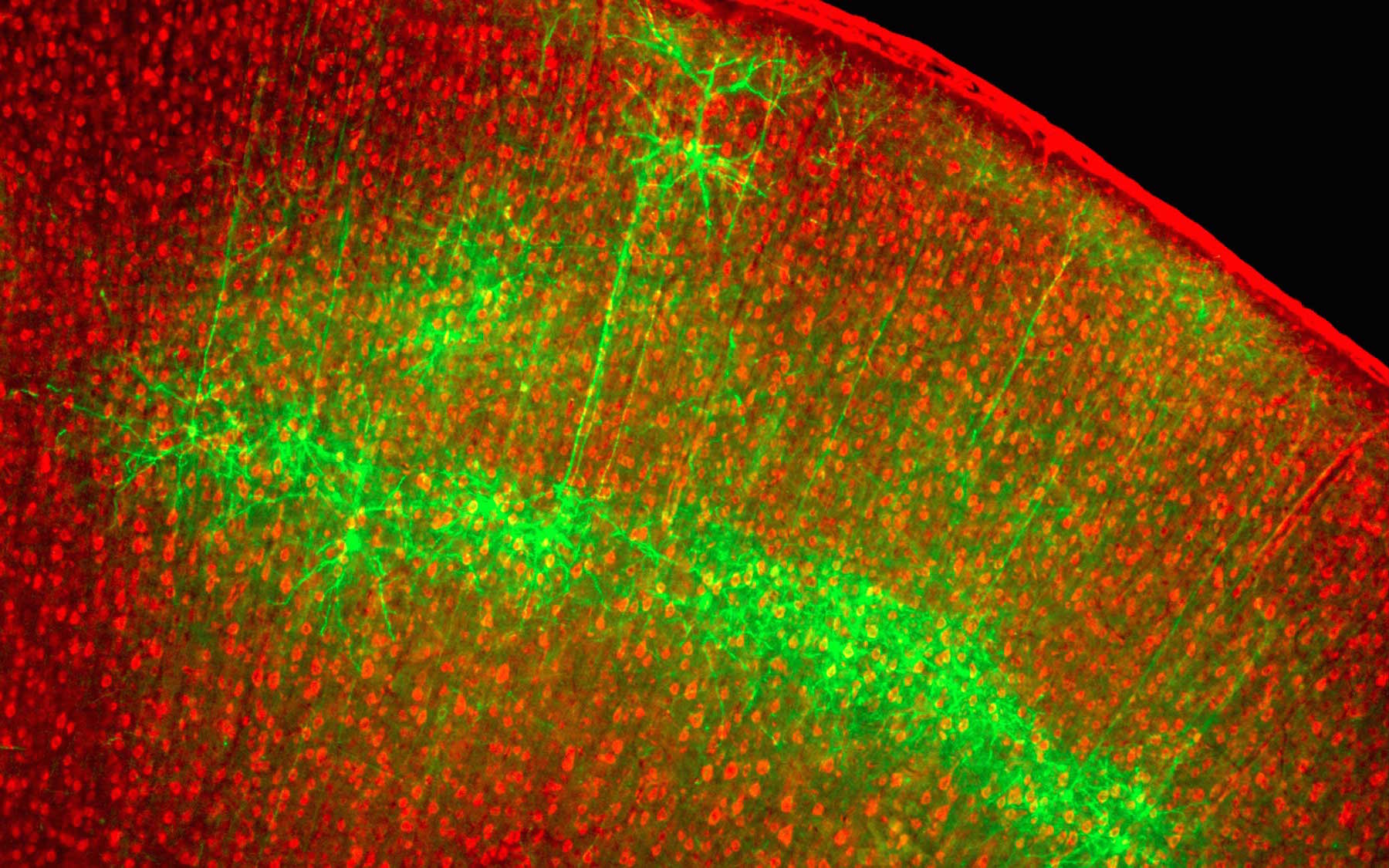How do our brains process sounds? It’s one of many fascinating biological questions that has had to wait for technology to catch up to it. Professor Anthony Zador and colleagues are making headway by tracking the flow of information between neurons in the auditory cortex of mice.
Crammed into the region are scores of neuronal subsets that differ in genetic type, function and point of origin in the brain. The conventional method of recording nerve impulses—via implanted electrodes—can’t discriminate between neuronal types. This makes it impossible to know how each group responds to a sound cue.
Zador solved the problem by “tagging” neuronal groups with channelrhodopsin-2 (ChR2), a light-sensing protein from green algae that causes neurons to fire an impulse when exposed to a flash of light. In one experiment, postdoc Susana Lima hitched ChR2 to a green fluorescent dye, packed it into a harmless virus, and injected it into a mouse’s right auditory cortex. By entering nerve endings and traveling through cable-like axons to their point of origin, the virus marked a group of neurons (green cells in the image) that originated on the far side of the brain. By gauging their response to a flash of light, the team could determine if these left-brain neurons fired impulses into the right brain when the mouse heard a particular sound.
Written by: Hema Bashyam, Science Writer | publicaffairs@cshl.edu | 516-367-8455
About

Anthony Zador
Professor
The Alle Davis and Maxine Harrison Professor of Neurosciences
M.D., Ph.D., Yale University, 1994
